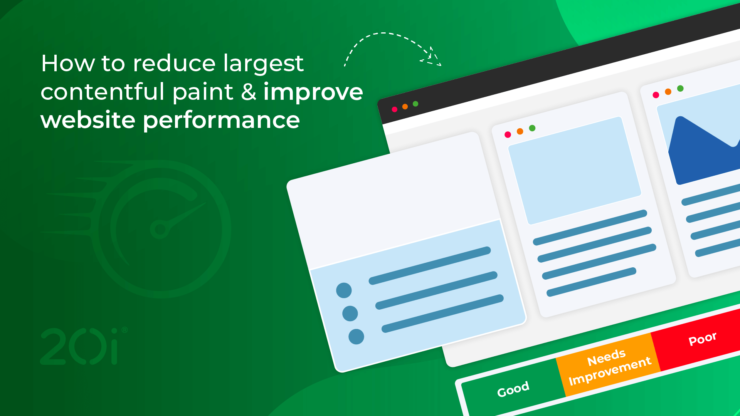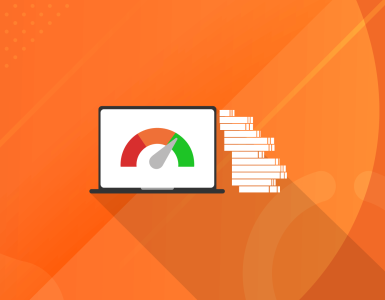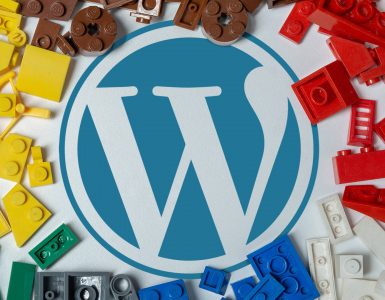User experience (UX) is a key factor in determining the success of your website when it comes to SEO.
There are many metrics to consider when assessing UX, one of which is Largest Contentful Paint – otherwise known as LCP.
In this guide, we’ll delve into what LCP is, its effects on your site, and practical strategies to reduce LCP for optimal website performance.
What is LCP?
Largest Contentful Paint (LCP) measures the duration of time it takes for the largest piece of content on your web page to become visible within the viewport during loading.
This could be an image, video, or block-level element. In simplified terms, LCP gauges how quickly users can see and interact with the most significant content on your webpage.
The Importance of LCP
As it directly relates to the largest – and possibly most important – part of your web page, LCP time has a significant impact on user experience, and how fast your website loads for any visitors.
LCP is also one of Google’s “Core Web Vitals” – a set of search signals for measuring page experience. As such, LCP (alongside FID, and CLS) is a known Google ranking factor.
Google sets a target LCP loading time of 2.5 seconds or less, so this will be taken into account when your website is competing for search ranking placements.
Effects of a Poor LCP Score
A poor LCP score can have multiple negative effects on your website.
Slow loading times, and lagging interactions caused by high LCP times can subsequently lead to decreased engagement from visitors. This may mean less sales, sign-ups, or leads.
SEO is also affected by LCP, as a slow website is less likely to rank highly in search results and may even be crawled less frequently by Google .
In general, if your LCP is poor, then this will mean a poor user experience.
How To Measure LCP
As with all core web vitals, the best way to measure your results is to use either Lighthouse, or Google PageSpeed Insights.
Both of these tools will provide you with a top-level score, alongside some general information on potential improvements that you could make.
Lighthouse runs within DevTools on your browser, whilst PageSpeed insights provides a more “real world” score that other visitors may experience, so we would always recommend running both tests to get a good average.
Practical Strategies to Reduce LCP
If you run an LCP test and receive a score of higher than 2.5 seconds, then there’s work to do, especially if you want to avoid the negative consequences for both UX and SEO aspects of your website.
Here are some practical steps that you can take to reduce LCP.
ℹ️ A lot of the CSS/JavaScript and Image optimisation techniques we list below can be done within My20i with just a few clicks, using our free Website Acceleration Suite.
Improve Your Web Hosting
A lot of your page loading time relies on the server your files are stored on, and the speed at which those files can be delivered.
Opt for a reliable hosting provider with fast server response times and high levels of uptime to ensure consistent performance. We are committed to providing the best web hosting service, and have been named ‘Best Web Host’ in the PC Pro Awards.
Use a CDN
Content Delivery Networks (CDNs) distribute your content across multiple server nodes worldwide, reducing response times and accelerating content delivery. This is particularly important if you have a lot of international visitors to your website.
ℹ️ All the websites that we host have free access to CDN nodes across 6 continents, to ensure localised delivery & speed around the world.
Good Image Practices
If handled incorrectly, images can be one of the biggest “speed drains” on a website.
To ensure your LCP is as strong as possible, ensure that you treat images carefully when uploading them. This includes:
- Properly sizing images to fit their display dimensions, reducing unnecessary rendering delays
- Compress images before upload, reducing their file sizes as much as reasonably possible
- Choosing web friendly image formats – WebP is best for speeds but can sometimes lose quality. SVG, JPG and PNG are also good choices when compressed properly.
Use Lazy Loading
Correctly implement lazy loading for images and other non-essential resources to prioritise loading critical content first.
This means less important content only loads when required, and your largest content can have the priority to load faster.
Implement Caching
Utilise browser caching, server-side caching, or CDN caching to store static resources like images, CSS, and JavaScript files.
Caching reduces the need for a server to fetch these resources repeatedly, resulting in faster load times and improved LCP.
ℹ️ There are multiple different caching options available, including StackCache our caching plugin that comes free with our WordPress Hosting.
Minify Code, such as JS, CSS, and HTML Files
Minimise file sizes by removing unnecessary characters and spaces from code. The smaller your DOM size and the fewer elements that your page must load, the faster things should be.
Here at 20i, all the websites that we host go through our free website acceleration suite, which is designed to minify code such as CSS, to reduce network payload and load websites faster.
Cut Down on Render-Blocking Resources
Similarly, to the point above, you should also analyse your website’s code to identify render-blocking JavaScript and CSS files. Optimise their placement or use async/defer attributes to make sure they don’t hinder content loading and improve LCP.
Large render blocking elements can significantly slow down your website and leave your largest, most important elements waiting in a queue to load.
Tools such as Lighthouse can help you to identify any render blocking resources.
Compress Text
Utilise Gzip or other compression methods for text-based resources like CSS files, JavaScript files, and HTML documents. Compressed files load faster, positively impacting LCP.
Final thoughts
As with many areas of website management, the key to ensuring a good LCP score is to implement a routine of best practices, and always keep your users in mind when uploading new content.
Prioritising a fast-loading website improves user experience, increases engagement, and ultimately drives the success of your platform.
Learn more about Google’s core web vitals with our First Input Delay guide.













Great concise article. I use WordPress reseller hosting and find 20i caching very good combined with Cloudflare CDN and Imagify. GT Materix is another very helpful speed tester for core vitals